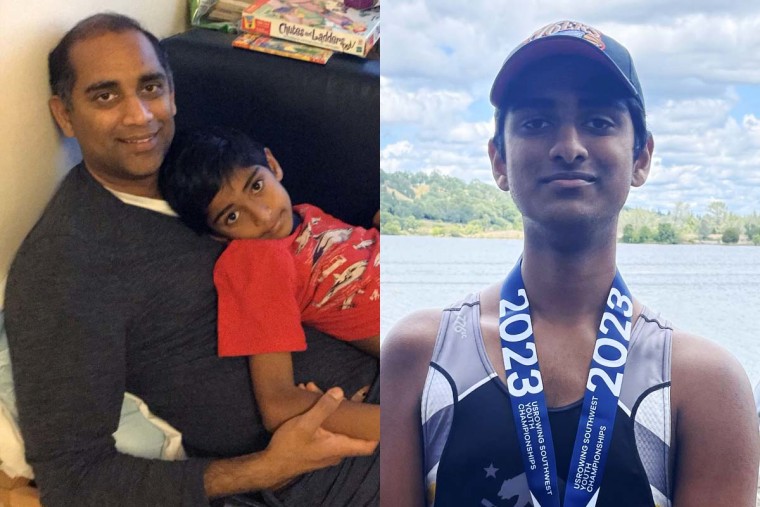“The second clue,” she said, “is that the time of year is right.”
Historically, September has been the biggest month for AFM cases.
Anyone who’s ever had the sniffles probably had an enterovirus; they’re that common. Most of the time, the viruses cause mild symptoms, such as a runny nose, cough, headache and generalized feelings of “meh.”
The D68 enterovirus strain started causing more serious problems in 2014, when the U.S. saw, for the first time, a spike in pediatric AFM. That year, 120 kids were diagnosed.
There’s no cure or specific treatment for the paralysis. Even with years of intensive physical therapy, many are left with life-altering disabilities.
A viral mystery
Though a few dozen cases have been reported every year since then, larger waves of AFM have followed an every-other-year pattern, spiking again in 2016 (with 153 cases) and in 2018 (with 238 cases).
The pattern stopped in 2020 when the nation went into lockdown because of the Covid pandemic, drastically reducing viral spread. That year, just 32 cases were logged. The spread of D68 picked up again in 2022 as lockdowns were lifted.
Curiously, a rise in AFM cases didn’t follow.
“We saw the virus that was previously driving the AFM cases, but we didn’t see the AFM cases associated with it,” said Dr. Kevin Messacar, an infectious disease specialist at Children’s Hospital Colorado, who treated some of the earliest AFM cases in 2014.
It’s a mystery that any virologist would appreciate. While experts try to predict how viruses will behave, the bugs are always working to stay a few steps ahead.
It could be that the virus itself has changed, or that more people in the U.S. have been exposed and now have a level of immunity to D68. “We’re still trying to figure it out,” Messacar said.
So far in 2024, 13 AFM cases have been confirmed, according to the Centers for Disease Control and Prevention. Since 2014, 758 cases have been logged.
The implication is that hundreds of families and their children have been left with lasting, life-altering paralysis because of a virus.
Some recovery after years of physical therapy
The Kagolanu family in Los Altos, California, was in a heated game of Monopoly one Friday night in November 2014 when 7-year-old Vishnu’s head began, inexplicably, to tilt to one side. Vishnu admits that even though he was losing the game, this wasn’t attention-seeking behavior.
“My dad was like, ‘Hey, what are you doing? Move your head back straight,'” Vishnu, now 17, said. “I just thought, I can’t do that.”

Within an hour, Vishnu lost all ability to move his arms and legs. “I couldn’t get myself off the floor,” he said.
Vishnu was one of the first to be diagnosed with AFM in 2014. At that time, no one had connected the dots between D68 and the “mystery illness.”
“We didn’t understand what was going on. Even the doctors couldn’t find out what was going on,” said Saila Kagolanu, Vishnu’s mother. “That was the worst experience of my life.”
Doctors warned Vishnu’s family that he might never regain function of his arms and legs. The poor prognosis crushed Vishnu. He’d always thrived as “king of the playground” when it came to sports and other physical activities.
“Seeing my legs go progressively smaller every day” was devastating, he said. “I couldn’t move.”
Vishnu spent years undergoing physical therapy to regain the ability to walk. That was successful. Otherwise, there’s not much doctors can do. His right shoulder remains limp.
Testing a possible treatment
“We all get really frustrated every time we get to this point, and we don’t have antiviral medicines that are readily available,” said Dr. Buddy Creech, a pediatric infectious disease physician at Vanderbilt University Medical Center in Nashville. “We don’t have much to offer these kids.”
Creech and his colleagues are working toward a solution. They’ve begun safety studies of a monoclonal antibody that would, ideally, stop D68 in its tracks.
“In mouse studies, it prevented infection that would lead to AFM,” Creech said. The study is expected to take years before the treatment is considered safe and effective.
Meanwhile, young people like Vishnu Kagolanu are attempting to move on and even inspire others with AFM. In recent years, he started a nonprofit called Neurostronger, which works to raise funds for and increase awareness of kids with neurologic conditions.
“Growing up with AFM is hard,” Kagolanu said. “But at the same time, there are ways to get around some of those obstacles. There are ways to find joy.”






